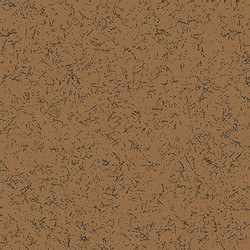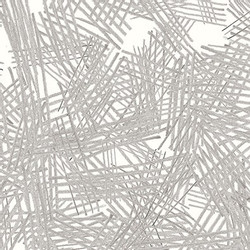Linka
![]()
The line on the paper is the first thing that comes to your mind.
The connection of the traditional Czech RAKO brand with world prominent Czech designer Maxim Velčovský resulted in the author’s NEWS 2021 collection of vitrified ceramic wall tiles, called Linka. The story of the Linka series – from the first sketch to its implementation, in the words of the author – can be seen in a video with Maxim Velčovský.
How do you perceive the RAKO brand, and what was the first impulse to create the Linka series for RAKO by Maxim Velčovský?
I was asked by the company to create a new series, and this was, of course, a great challenge. This is because RAKO is a brand that represents a certain visual world, one in which we live. Everything we see around us was designed by someone. Regardless of houses or interiors, and designs that surround us. And, historically, RAKO participated in this landscape of shapes. People visit Café Imperial with its incredible interiors, go to pools, spas, bars, and move about in houses where RAKO participated in the creation of public and private spaces. I am the founder of the Wall and Floor Tiles portal in Czechoslovakia, where we map old wall and floor tiles in community houses; the tiles that are still there even now. We encourage people to restore old tiles, and not just to replace them with new ones every time. They encourage them to bear relation to history. It was something incredible for me to design the RAKO series. The RAKO brand has been around for over a hundred years, and is part of our identity and visual culture. As soon as you got to the factory. As this is a space that I have always been interested in, because I had to feel the process of creation, production, and technology to come up with an interesting solution.
“Linka” is the name of the new RAKO series. Does the series capture a passing thought or idea by means of line or drawing?
For me, drawing is part of defining an idea. In fact, the line on the paper is the first thing that comes to your mind. I presented some references as to what the line means, and where it starts: The line starts abstractly, and by connecting more lines together, you can create specific shapes. As they say in English: “You start from scratch”, which means that you start from zero, specifically from a point where there was nothing before. For the said reason, I found it interesting to work with line in the Linka series.
How does the design of this series come into being? First, you were in a factory. Then, did you form an idea of what the series would look like?
Every designer is a kind of a detective, who should get acquainted with corpus delicti, and touch the place of the scene. They must solve a crime. They have to get acquainted with the manufacturing process, watch and carefully examine what is happening in the surrounding area, how the minerals are ground, what is happening at presses and production lines, and why it is important to listen to experts, as well as the production team. The team is very important. If the team is not on your side, the whole project can be killed in the final stage. In the final stage, the Linka series was created thanks to the fantastic teamwork of all the people participating in the project.
The designer is always there at the beginning, but the implementation can complicate the the designer’s life. It is necessary to make some compromises sometimes, but fortunately, this was not the case with this project.
So did you find ideas in the production process, and then start looking for solutions?
For me, it is important to respect production. We cannot invent something that cannot be implemented, and, at the same time, it must enrich the company’s portfolio. The new series is called Linka (Line in English). The project series consists of two lines - the first one represents drawing, where the décor becomes a line scan, from which a larger décor is created. The smaller one is drawn in a computer to form a composition. In the computer environment, the line is sent to a million different sizes in space. You look at thousands of lines in a never-ending space. Then, you take a picture of these lines, and transfer them back onto a surface. From infinity, a mosaic of lines is created, namely an approach which will allow you to invent a structure on a tiled surface. There are other approaches, something like line multiplication.
The second Linka takes me to the time when people moved from caves to dwellings, when they began digging pits, and using branches to weave them and cover with clay. Thanks to this approach, walls were created, and houses and dwellings were built. For me, tiles on the wall are the evolution of the wall. A combination of practical and aesthetic functions. You can also see structures and grids, the parameters I care about. In addition, thanks to computer science, we can also work with algorithms. This was not possible a few years ago.


What are the formats of this series?
Floor tile formats are 60 x 60 cm and 20 x 20 cm, allowing combination of more colours and designs in one area. Both formats are rectified, and can be placed using a smaller joint.
And what about the colour scale?
People furnishing their interiors choose between lighter and darker approaches. I have prepared a group of eight decoration types. They are divided into two groups.
One group contains mainly black and brown colours; this is the earthier approach. It is always enriched with a contrasting floor tile. And the second group is a combination of grey and white colours, enriched with grey and black décors.
And what about the surface?
The surface is interesting to the touch; you can feel a subtle pseudo embossing. The tile surface is anti-slip, safe, and yet practical and very easy to clean.
The Linka series is finally born. How would you describe it?
I think that we have created a truly contemporary project. It is good news for people who look for new approaches and new things, or, on the contrary, who expect a combination of tradition and new approaches. At the same time, the project should be timeless. It was created at a certain time period, and is universal and timeless for people who want to buy these floor tiles a few years ahead. They should not have a problem that it is outdated. At the same time, there are two lines which intersect – an ornamental line based on the sketch, and the minimalist line, which creates a unified surface that is not disturbing for the eye. I would like to summarise it as a contemporary, timeless, and ornamentally minimalist surface.
Which areas would make you happy if they were tiled with the Linka series? Where would you like to see the Linka series?
It is good to listen to architects, and when such a tiled surface gets into an interesting project, it is a source of joy. Because I am fascinated by the public area, which is always defined by a certain architectural approach, I would like the Linka series to be used both in public and private areas.
-----------------------------------------------------------------------------------------------------------------------------------------------------------------------------
 The Linka series consists of vitrified ceramic glazed wall tiles with fully coloured bodies. This series is very suitable for commercial and private spaces too. The possibility of its use in public projects is contributed by smooth, matt surfaces, with slip-resistant values of R10/B, which are pleasant to touch and excellent to clean (ABS surface type).
The Linka series consists of vitrified ceramic glazed wall tiles with fully coloured bodies. This series is very suitable for commercial and private spaces too. The possibility of its use in public projects is contributed by smooth, matt surfaces, with slip-resistant values of R10/B, which are pleasant to touch and excellent to clean (ABS surface type).
Download
- 2021_linka_east.pdf (PDF; 1.2 MB)






















